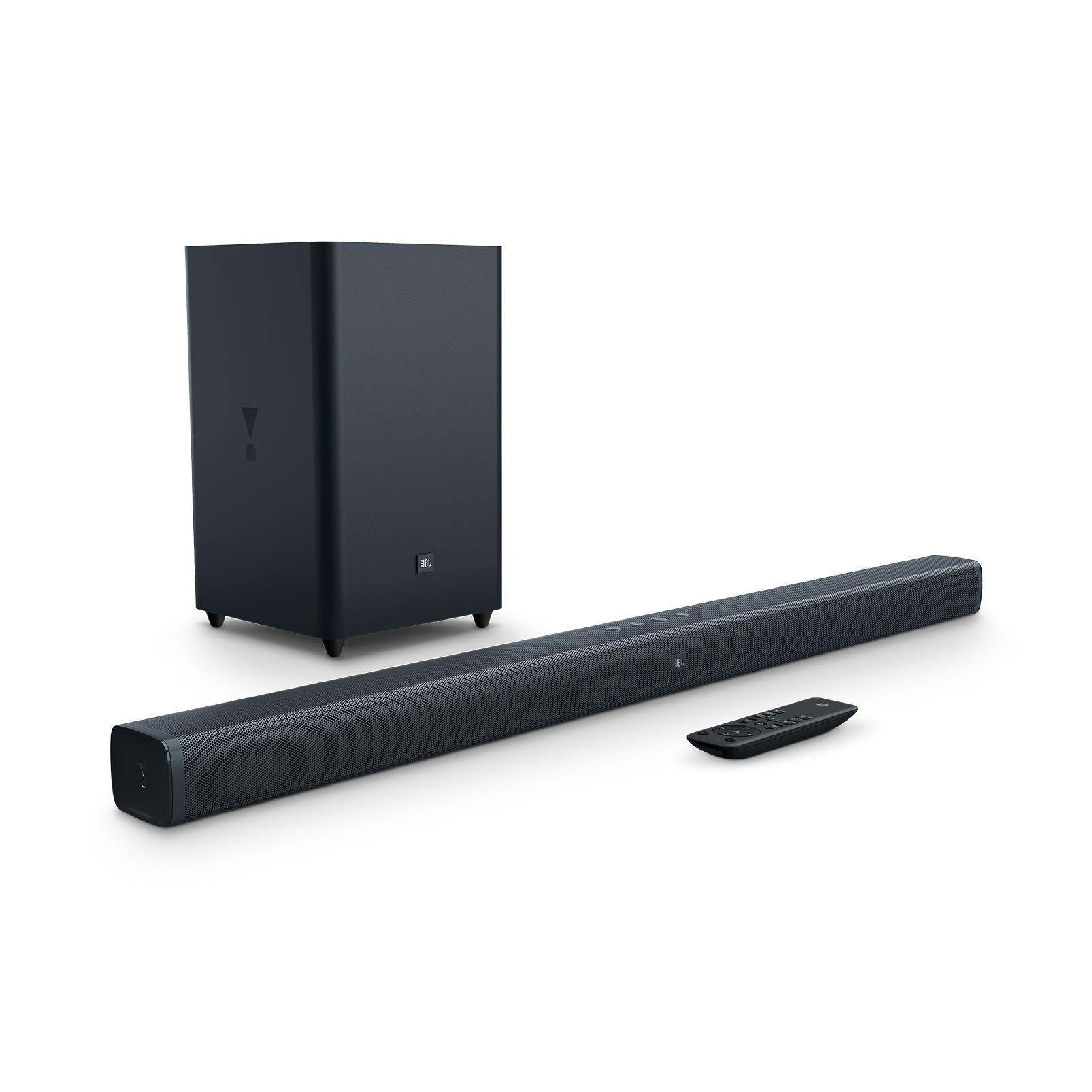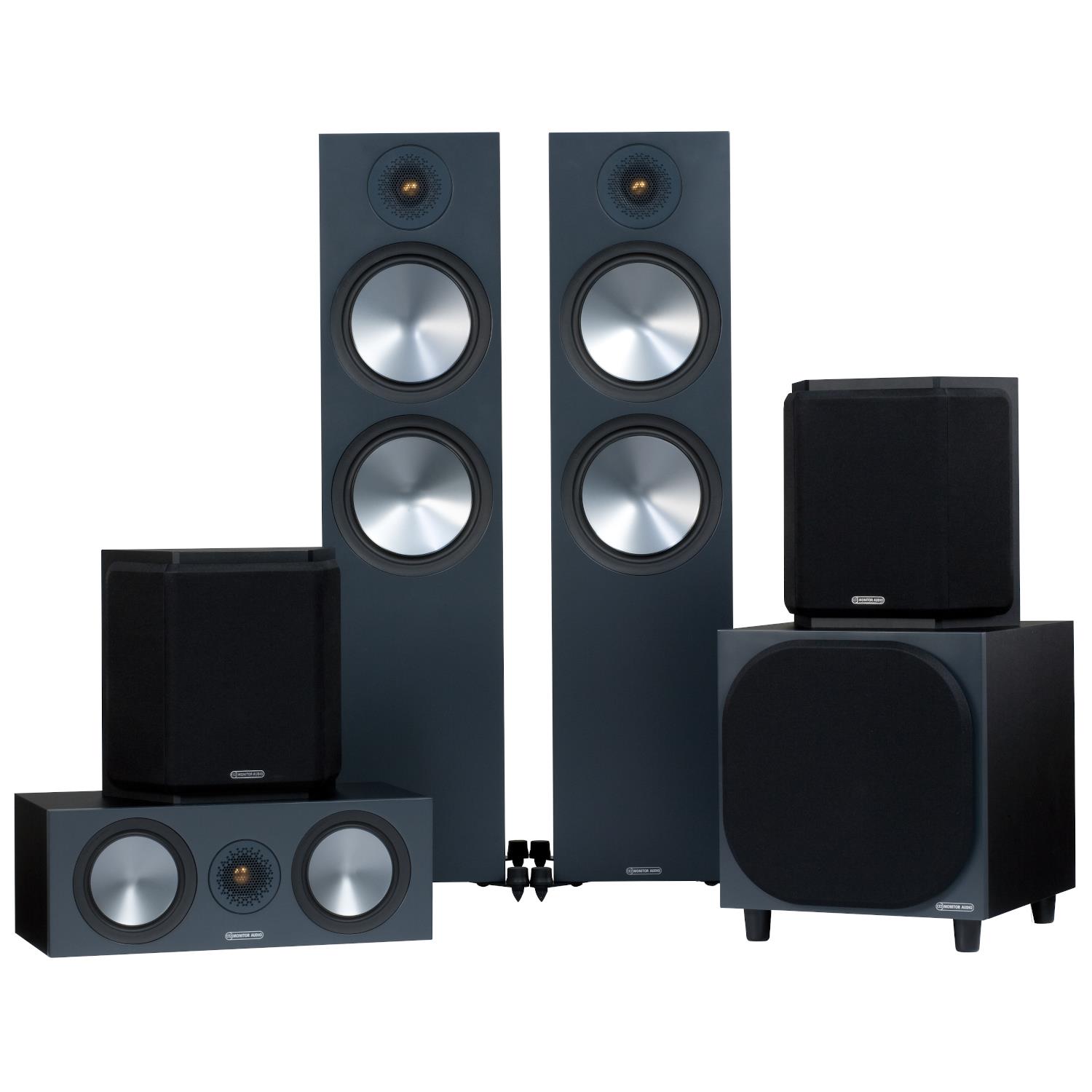After you’ve selected a television, the following step is to select an audio system that will complement it. Soundbar devices are a popular way to enhance entertainment units, although which one should you choose and how do you tell the distinction between a 2.1 and 5.1 soundbar?
A 2.1 soundbar is made up of two speakers, usually a right and left channel, plus a subwoofer. A 5.1 soundbar on other hand consists of five speakers, generally front right, front left, front center, surrounding right, surrounding left, and a separate subwoofer unit.
The front speakers of a soundbar are usually built-in, whereas the surrounding speakers are usually external. However, the solution is a little more nuanced. More speakers, not just more volume, improve surrounding sound immersion and provide a more cohesive entertainment environment.
That’s not to imply a 5.1 speaker is appropriate for everyone. There are a few things to keep in mind while looking for the perfect audio setup for your house.

2.1 Channel Soundbar
A 2.1 channel soundbar includes two (typically more) speakers divided into right and left parts, as well as a distinct subwoofer.
Additional speakers aren’t merely for adding volume, as noted previously. More speakers, on the other hand, aid in the creation of a realistic surround sound environment.
With a 2.1 soundbar speaker, you’ll get separate right and left audio channels from those two or even more speakers. That’s a terrific starting point for your audio system, but it’s very basic and won’t significantly enhance the listening quality.
There will be distinct right and left channels, although there will be little else. Both surround sound or stereo choices are available on soundbars, although they’ll sound comparable with a 2.1 soundbar configuration. A recommended example is the JBL 2.1 Soundbar.

5.1 Channel Soundbar
With three more channels or speakers, a 5.1 soundbar system will provide a considerably fuller audio experience. There’s usually a front right, front left, front center, surrounding (back) left, surrounding (back) right, and a secondary subwoofer.
The front three channels or speakers of the soundbar are normally integrated in, with two different surrounding speakers.
The soundbar may, nevertheless, have five channels built in. Despite the fact that the additional two channels are placed within the soundbar, they serve as “surround” channels. A recommended example is the Samsung HW-A58C/ZA.

Device Compatibility
For audio communication, most soundbars and 5.1 home theater speakers use HDMI ARC (Audio Return Channel). Check to see if your TV has an ARC-compatible HDMI output. Alternatively, you’ll have to choose between SPDIF and Toslink.
You won’t be able to use DTS-X or Dolby Atmos upgrades on your multi-channel audio devices without HDMI ARC.
You’ll also need to see if your TV has 5.1 surround sound managed switch. The sound output will be constrained to stereo only if this is not the case.
It’s worth noting, though, that most Blu-ray players, game consoles, PCs, and current-generation televisions offer 5.1 audio, so interoperability shouldn’t be an issue.
What Exactly Are Audio Channels?
There are multiple audio channels available, ranging from 1.0 (mono) to 7.1.4 (stereo) (Atmos). The first decimal number in the audio channel means the number of directional speakers, while the succeeding decimal numbers reflect the number of subwoofers.
Overhead speakers are indicated by the number following the second decimal.
The 2.1, 5.1, or 7.1 audio channel layout can be found on home theater setups. The most typical configurations are 2.1 and 5.1, which feature either two speakers and a subwoofer or five speakers and one subwoofer.
You’ll get left and right audio channels with a 2.1 channel audio equipment, resulting in a stereo arrangement.
A 5.1 channel audio system, on the other hand, has front left, front right, front center, surround left (back), and surround right (rear) channels, as well as a separate subwoofer.
You get a surround sound experience thanks to the 5.1 audio channel’s arrangement.
Separate Surround Speakers For 5.1 Channel Soundbar
A traditional 5.1 stereo sound system looks like this. Three front channels, a subwoofer, and two surround channels are included.

Additional speakers are frequently installed in the back right and left corners of the room. A 5.1 soundbar provides depth and a distinct sense of right and left.
That level of immersion captivates you in your movie in a manner that several front speakers can’t match.
You’d swear the blast in that action thriller happened right behind the couch. You’ll be able to track down video game foes by hearing their movements.
Soundbar With 5.1 Channel Audio and Built-In Surround Speakers
As previously stated, some soundbars include the two “surround” speakers in the soundbar system on its own. These surrounding channels/speakers are typically placed in such a way that vibrational frequencies are reflected with extreme precision.
By bouncing soundwaves off the back of a room, you may give the impression that there really are speakers all around you. When the source of the sound is directly beside you.
However, not all room forms and sizes are compatible with this method. This should work nicely in a more closed or boxed off environment! The soundwaves, on the other hand, are difficult to reflect correctly if the area is highly open.
Don’t get mixed up: 5.1 soundbars with built-in surrounding speakers sound great! You get a surround sound experience thanks to the 5.1 audio channel’s arrangement.
What if There’s a Third Number?
Some 5.1 sound systems have a third number (e.g. 5.1.4), indicating that some speakers transmit sound upwards. The sound reflects it off of the ceiling, adding depth to the surrounding sound.
2.1 and 5.1 Soundbars
The number of speakers does not always imply the quality of the speakers. 2.1 soundbars include high-quality speakers that will satisfy any enthusiast.
Those same powerful speakers may be found in a 5.1 soundbar arrangement, however there are also 5.1 soundbar installations with sub-par speakers. It all comes down to the speaker components and soundbar shell performance.
Consider what aspects of sound are most important to you and how certain goals fit into your budget before you begin shopping.
Is it worth foregoing surround sound quality in favor of high-end speakers? Would you prefer good speaker quality over a fantastic surround sound performance, or the other way around?
The Advantages of Soundbar Systems
You might be wondering why you’d want a soundbar in the first place. Soundbars are appealing because of their combination of portability and audio. The 2.1 systems, for instance, give real audio quality and a subwoofer with just a single soundbar.
With just a few additional speakers to attach, a 5.1 soundbar may enhance your listening quality even further. You can save money by purchasing speakers that have Bluetooth, which will make the setup procedure easier and reduce the amount of wire clutter.
When compared to the time and effort required to set up a traditional surrounding sound system, which includes connecting every one of the speakers and running all of the cables. A soundbar is your best pick if you’re searching for the simplest way to improve your listening environment.
Subwoofer Advantages of a Soundbar’s Easy-Setup
Subwoofers are included in both classic surround sound and soundbar setups, but it’s worthwhile noting why they’re so important. A wire will be needed to connect to the subwoofer in a standard surround sound system.
Almost all soundbar arrangements eliminate the need to connect a cable to the subwoofer. They link to the soundbar through Bluetooth or Wi-Fi and use RF (radio frequencies).
Do you always notice that the audio on your TV’s built-in speaker becomes distorted or distorted? This is due to the fact that ordinary speakers are incapable of handling pitch extremes ranging from high screeches to extremely low rumbles.
Because a subwoofer is a specialized bass speaker, your bass will be crisp and powerful. Although the bass may shake the floor, the sound will not be distorted thanks to the subwoofer.
5.1 Soundbar Systems Aren’t for Everybody
If you want efficiency over anything else, a 5.1 soundbar setup might not be the best alternative for you. A 2.1 installation is much simpler to implement because it has fewer speakers.
Despite the fact that a 2.1 setup has two speakers, the soundbar, which is placed beneath your television, combines both speakers.
Sure, there’s a subwoofer, but it’s a reasonable sacrifice to set up just two bits of equipment in trade for such great sound. It’s impossible to find a better balance of clarity and simplicity than just that provided by a superb 2.1 soundbar setup.
Cost Differences
“How much would all of this charge me?” is the logical next question. The fact that more costly speakers are more expensive should come as no surprise.
However, based on your needs, a 5.1 soundbar may not be significantly more costly than the 2.1 system. When it comes to finance, it all boils down to the choice between speaker performance and surrounding listening quality.
If you shop around for deals, you can likely find a 5.1 soundbar system for less than $200. You can spend literally hundreds more if you don’t mind blowing your budget, especially if you want high-quality speakers with a wireless connection.
JBL is a well-known speaker company that sells a great wireless 5.1 soundbar system with replaceable surround speakers, however it comes at a high price. If your budget allows, you can go for a larger system, such as a 7.1 system.
But at the other end of the pay scale spectrum, a conventional 2.1 soundbar can be bought for cheaper.
FAQs
1) Is the quality of common television speakers really so bad?
“Yes,” is a rapid response, but a more accurate question may be, “Does the speaker performance worth that much to me?” Garbled vocals and blown-out sound may not disturb casual TV viewers, especially since they will only hear it at maximum volume.
However, if you want consistent audio at any volume, most specialists recommend using an external audio system.
2) On a soundbar, what does 3.1 mean?
The number three indicates that the soundbar has three channels. The soundbar comes with a left, right, and center channel. The one indicates that the soundbar equipment is equipped with a single sub-woofer.
The soundbar and subwoofer typically link wirelessly, however this isn’t always the situation.
3) Are soundbars the only option for replacing regular TV speakers?
Not in the least! Speakers come in a variety of forms and sizes, and a person’s preferred configuration is usually just that: personal. To complement their record collection, musicians may choose antique analog speakers.
Smart speakers, which connect to smart home devices and combine high-quality music with voice-activated technology such as Google Home or Amazon’s Alexa, are popular among tech enthusiasts.
Soundbars, on the other hand, are a fantastic option for anyone looking for high-quality sound with a simple, low-cost setup.
Final Words
This information should have cleared up any questions you had about 2.1 and 5.1 soundbars. Nevertheless, it all comes down to personal style and the amount of space available for your home theater setup.
Soundbars are portable, adaptable, and simple to set up. Home theater audio systems provide a far superior sound experience, but they take a lot more work to set up and need a lot of room in your home.
You may also be interested in:
- Differences Between a 2.1 and 3.1 Soundbar
- 10 Best Soundbars Without Subwoofer
- Best 7.1 Home Theater Systems
